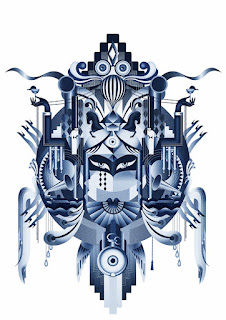Animation Workshop 1 - Collaborative Transformation Animatio
The workshops for this term were on a sign up basis. I decided to sign up for the three part animation workshops because I have an interest in the specialism and wanted to further my skills and knowledge of creating animations.
Previously, I created a stop motion animation during my Art course at college and this involved photography and using a smartphone app to put the frames together, creating a moving image. Stop motion animation is a technique that involves the physical manipulation of an object so that it appears to be moving on its own. It tends to be made up of many frames and is played as a fast sequence.
The first workshop for BA (Hons) Illustration Year 2 was based around the technique of transformation animation. We were firstly given an introduction to the technique, this included verbal explanation as well as the projection of famous transformation animations that already exist which can be found on YouTube.
We then got into groups of five and were each told to draw a different object on a piece of A4 paper. I chose a pair of scissors because they can create quite a nice 'cutting' movement when being used which could work well when put into an animation format. We had to draw the objects on the paper in landscape orientation because screens are always of landscape orientation.
 |
| My first drawing - a pair of scissors |
We then had to give our drawing to the person to the left of us sat at the group table. The next person would then trace the drawing using a lightbox so we would each have a copy of their drawing to be used in each of our individual parts of the group animation.
The person next to me had drawn a car key so I traced this drawing and it became the last drawing frame of my part of the animation.
 |
| Original drawing of the person sat to the left - traced using a lightbox |
The next stage of the development process was to create a series of drawings that would be used as the frames between the first and last drawings, creating a transformation from one object to another. This could have been quite difficult if the objects were more complex but we were told to draw simple objects so this drawing task wasn't too much of a challenge. I made some very quick thumbnails before drawing out each frame so I would have an idea of composition and spacing within the landscape A4 page.
Here are all of my drawings in the order I drew them in. I decided to draw using pencil so I could easily erase any mistakes. I don't often draw frames so I did find it a little challenging and time consuming to think about how the object would move as it merged into another object.
In my next post, I will explain the capturing process and include the final animation video.

















Comments
Post a Comment